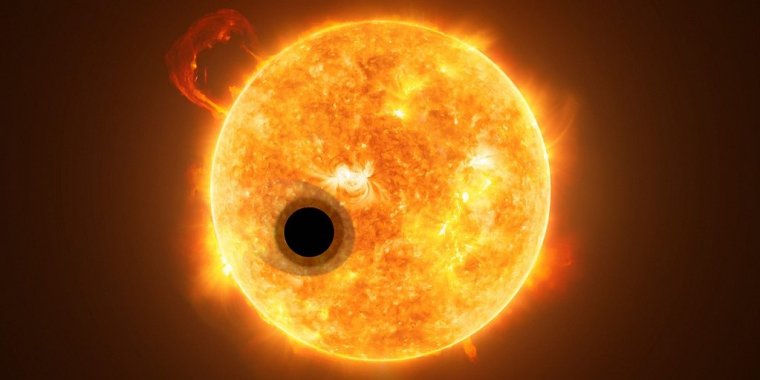| News / Space News |
Multiple metals – and possible signs of water – found in unique exoplanet
An international team of researchers have identified ‘fingerprints’ of multiple metals in one of the least dense exoplanets ever found.

The exoplanet WASP-127b, a gas giant, orbiting his star - artist impression. Image credit: ESA/Hubble
University of Cambridge and the Instituto de Astrofísica de Canarias (IAC) in Spain used the Gran Telescopio Canarias (GTC) to observe WASP-127b, a giant gaseous planet with partly clear skies and strong signatures of metals in its atmosphere.
WASP-127b has a radius 1.4 times larger than Jupiter but has only 20% of its mass. Such a planet has no analogue in our solar system and is rare even within the thousands of exoplanets discovered to date. It takes just over four days to orbit its parent star and its surface temperature is around 1400 K (1127° C).
The observations of WASP-127b reveal the presence of a large concentration of alkali metals in its atmosphere, allowing simultaneous detections of sodium, potassium and lithium for the first time in an exoplanet.
The sodium and potassium absorptions are very broad, which is characteristic of relatively clear atmospheres. According to modelling work done by the researchers, the skies of WASP-127b are approximately 50% clear.
The presence of lithium is important to understand the evolutionary history of the planetary system and could shed light on the mechanisms of planet formation.
The planet’s host star, WASP-127, is also lithium rich, which could point to an AGB star – a bright red giant thousands of times brighter than the sun – or a supernova having enriched the cloud of material from which this system originated.
The researchers also found possible signs of water. While this detection is not statistically significant, as water features are weak in the visible range, the dataindicate that additional observations in the near-infrared should be able to detect it.
The results demonstrate the potential of ground-based telescopes for the study of planetary atmospheres.
We are just starting to probe the atmospheres of exoplanets with ground-based telescopes, but the authors believe that this will also be a reference exoplanet for future studies with space telescopes such as the James Webb Telescope, the successor to the Hubble Telescope.
These future studies will reveal the detailed nature of WASP-127b as a benchmark for this new class of very low-density exoplanets. (University of Cambridge)
YOU MAY ALSO LIKE
